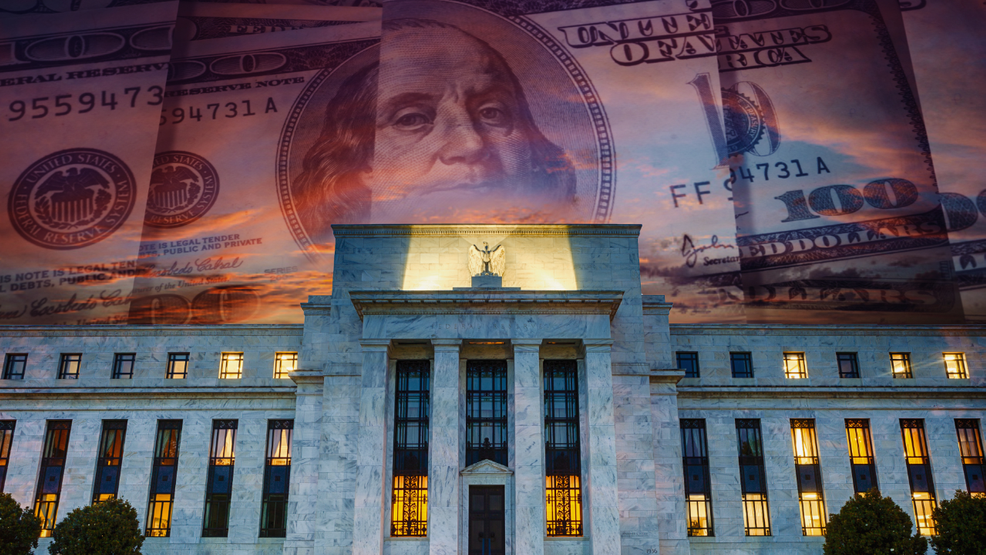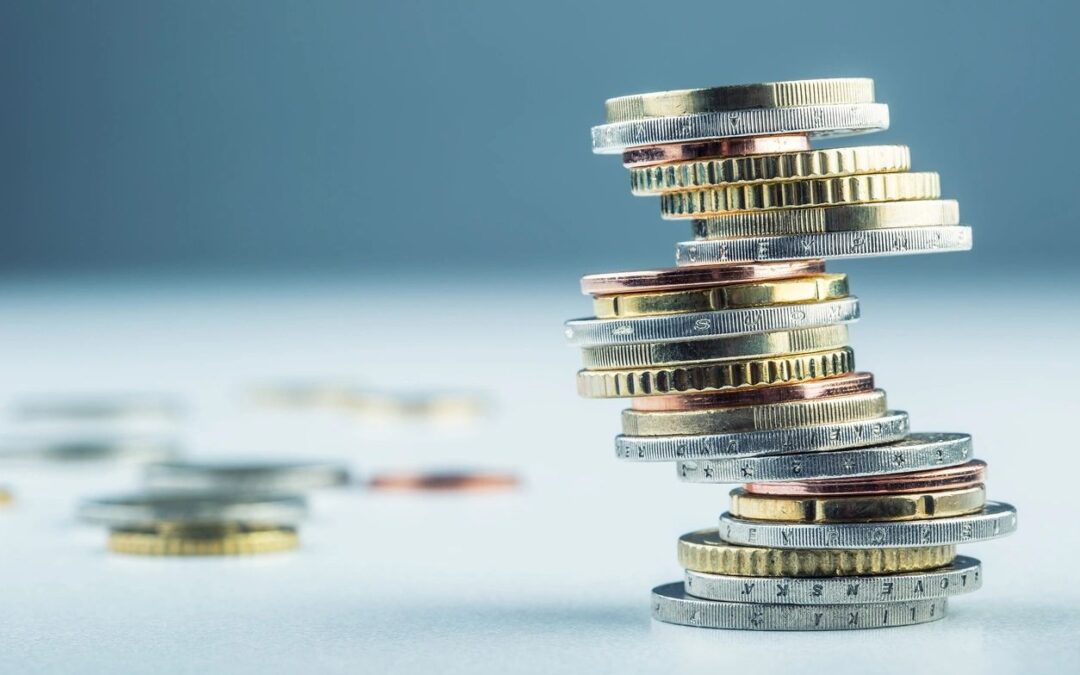
by Nicholas Mitsakos | Economy, Investment Principles, Public Policy, Writing and Podcasts
Interest rates are increasing, and bills are coming due for banks, taxpayers, and bondholders. More worryingly, rising interest costs will squeeze government budgets more than realized. Toss this onto the pile of higher energy costs, rising defense spending, aging populations, slowing growth, and the need to address climate change. As short-term interest rates rise, profits from quantitative easing will disappear (it was over $1 trillion from 2010 to 2021, for the US government).
More broadly, a full accounting of interest rate sensitivity is terrible news for the central banks in Britain, Japan, Europe, and the United States. Higher interest rate costs will impact budgetary flexibility, central-bank profits will be limited or disappear, and costs will be substantial, whether born initially by governments, the banking system, or taxpayers. Eventually, taxpayers will pay.
Government budgets will continue to be squeezed and economic flexibility will be limited or lost. That’s right, I don’t hear any music either.

by Nicholas Mitsakos | commodities, Economy, Public Policy, Writing and Podcasts
The average prices of food and fuel rose more than 16% in February from a year earlier and are expected to rise further by the war in Ukraine. Consumers are paying much more for meat, bread, milk, shelter, gas, and utilities. Only a small amount of food consumed in the U.S. is imported, and most of that is from Mexico and Canada. But Russia provides 15% of the world’s fertilizer and other agricultural chemicals that are now in short supply as planting season approaches. Wheat futures are up 29% since Feb. 25 and corn is up 15%. There is no shortage of wheat in the U.S., but global supply was the tightest in 14 years before the conflict, and dramatic shortages and price spikes are expected. What data is the Fed looking at, and how is it assessing inflationary risks? It’s hard to feel confident that the right hands are on the wheel because the combination of extraordinary factors, such as extremely tight labor markets and wage inflation (at over 6% annually and accelerating) showed inflation was already a significant risk. Yet interest rates were left unaltered. This is even before the crisis in Ukraine. The Fed should do whatever is necessary with interest rates to bring down inflation, including movements of more than a quarter-point, and a rapid reduction of its balance sheet. It also means recognizing that unemployment is likely to rise over the next couple of years. Paul Volcker would not have had to take extraordinary steps, driving the economy into a recession to crush runaway inflation, if his predecessors had not lost their focus on inflation. To avoid stagflation and the associated loss of public confidence in our economy today, the Fed has to do more than merely adjust its policy dials — it will have to head in a dramatically different direction.

by Nicholas Mitsakos | China, Economy, Investment Principles, Investments, Public Policy, Writing and Podcasts
Collectively, the world is good at screaming about all sorts of immediate and looming crises, whether that is climate change, totalitarian governments abusing civilians and trampling on personal rights or outright genocide. A speech and a prayer suffice but we’re not going to do anything. Donation websites, lighting buildings in flag colors of abused nations, and sending hopes and prayers accomplish nothing. We send prayers. We just won’t answer them. The Ukraine war’s consequences are severalfold. Economically, global consequences may be slower and less spectacular than the dramatic Russian military invasion. But, the effects will permeate the global economy, and Russia will be the biggest long-term loser. While this does not comfort families suffering and dying in the streets of Ukrainian cities, it realigns global industries and economies, strengthens the West, and is likely to galvanize United States’ leadership in the global economy – setting up even more intense rivalry China. A big uncompromising response now is the most likely strategy to settle these dramatic issues – and if it leads to regime change in Russia, that helps everyone, especially the Russians. The US and the EU need to grow up and start acting like global leaders.

by Nicholas Mitsakos | Artificial Intelligence, Economy, Health Care, Public Policy, Technology, Writing and Podcasts
Observing is not learning. Acting is. But we’re not going to do that. A call for action is sufficient, as long as someone else does it. That much we’ve learned. What used to take several years now takes a fraction of that – including miraculous innovation and profound global disruption. “Five years in 18 months” caused an initial burst of productivity, clarity, and efficiency, but also a train wreck of supply chain disruption, virtual meetings, empty classrooms, and social isolation.

by Nicholas Mitsakos | Book Chapter, Economy, Public Policy, The Market, Writing and Podcasts
A National Investment Authority, an idea gaining traction among the administration, would be responsible for “devising, financing, and executing a long-term national strategy of economic development and reconstruction.”
This is not the job of a government; this is the role of the free market. The market does this quite well, and government does this quite poorly. An NIA is another way to bring misery and inefficiency.
Policy reflective of central planning, socialism, or industrial policy brings misery to all. This discredited philosophy that tortured so many in Eastern Europe and Soviet Russia seems to be getting more traction today bewilderingly. It leads to nothing more than bureaucratic idiocy, waste, and disregard for any consumer needs.

by Nicholas Mitsakos | Book Chapter, Currency, Economy, Public Policy, Writing and Podcasts
Central bank independence and fiscal responsibility matter, even though the Western world is acting as if these rules no longer apply. Well, perhaps. But the world has given us three examples where the consequences are extreme when these basic foundations of economic policy are ignored or violated. Ultimately, if markets lose confidence in a central bank’s independence and thoughtfulness (yes, thinking really matters), or a sovereign government’s fiscal responsibility (where thoughtfulness is never taken for granted), inflation expectations will undermine an economy and make recovery almost hopeless.

by Nicholas Mitsakos | Artificial Intelligence, Book Chapter, Digital Assets, Finance, Investments, Public Policy, Technology, Writing and Podcasts
Technology is facing a substantial crossroads as policy changes with global resonance, such as China’s new crackdown on the country’s big tech companies (such as Ant Financial and Didi Global), the rising resistance to social media behemoths like Facebook, and the need for governments, whether in the United States, Western Europe, or China, to manage and control technological development. Regardless of any good intentions, this will add friction, inefficiency, and underperformance to the most dynamic global industry. The best intentions usually bring disastrous consequences. China cannot escape the law of unintended consequences. Trying to “manage” innovation and creativity takes away the often unplanned and serendipitous breakthroughs that make many significant advancements possible in the first place. From an economic perspective, capital is not going to invest in an uncertain environment where prosperity is managed and, despite great risk where most ventures will fail, the truly successful ones which make up for the losses and encourage capital to keep investing, will be mitigated. The vanguard of capital flight from China is beginning, and it will not ease if this policy and attitude are not revised. This attempt at “fairness and more equal distribution” will do nothing more than keep capital away and stifle any attempt at creativity, technical innovation, and economic advancement. The intention of this policy will yield the opposite outcome as a consequence. The signal means substance. Substance means innovation, creativity, and competitive dynamics that create the most effective innovations, the best solutions, and the most sustainable companies. Central planning, bureaucratic industrial policy, government-led economic management, and dictatorial focus have always failed, and always will. The US should not fall into this trap, regardless of how appealing it may be.
It is only noise.

by Nicholas Mitsakos | Book Chapter, China, Public Policy, Trade, Writing and Podcasts
The “Thucydides trap” is where a rising nation-state – for Thucydides it was Athens – must eventually have a violent confrontation with the existing dominant nation-state – Sparta in his time. It is a zero-sum game where there can be only one dominant nation-state as the eventual winner – and it is usually assumed to be the rising nation-state outdoing the dominant nation-state.
Today, many “experts” (and I have great disdain for self-proclaimed experts) believe this is the circumstance between the US and China. We are headed toward violent confrontation where there can be only one winner. I read the book by Thucydides about the conflict between Athens and Sparta (I cannot be dispassionate here about that outcome because my family is from Sparta on my father’s side). But I fundamentally disagree with Thucydides’s historical descriptions being used as analysis by anyone to describe global events, especially those between the US and China.

by Nicholas Mitsakos | Book Chapter, Digital Assets, Green Energy, Public Policy, Writing and Podcasts
Digital currencies, crypto assets, digitized securities, and distributed ledgers require an enormous amount of power. While the combination of these assets is subject to tremendous hype, the environmental impact has been mostly ignored. However, this is changing because there has been increasing alarm about crypto’s carbon footprint and environmental impact. While there are attempts to use alternative energy, such as solar farms, thermal heat, and wind farms, sustainability for processing digital assets is still evolving. One thing is clear, as advancements are made in clean and renewable energy, digital asset mining will reduce its requirement for carbon-based energy. This is an essential trend if digital asset processing is to be sustained as an important component of global finance. The trend toward digital assets disrupting global finance is irreversible, thus green energy solutions are essential, and a condition precedent in order to participate and profit from this economic opportunity. It is crucial for crypto mining to address the environmental concerns attached to digital asset processing and creation. There is an irreversible shift to decarbonization and lower carbon footprints. The digital asset market is not going to go away, but since energy is such a critical component, energy efficiency and green energy are the essential components to any long-term perspective of a digital asset strategy. The low-cost provider wins. With digital assets, that means the combining lowest carbon footprint with scale and the ability to connect to the electrical grid.

by Nicholas Mitsakos | Book Chapter, Investment Principles, Public Policy, Writing and Podcasts
Inequality is not an appropriate measure of economic performance or wealth creation.
Inequality is a relative and comparative statistic. It shows how wealth is distributed, which is not that meaningful, and certainly should not be the basis of economic policy. Essentially, inequality is a comparative metric and not an absolute one. That is, if everyone does better but a few people do much better, inequality increases, and this is seen as something bad even though everyone is better off. It is used to create misleading policies that focus on redistributing wealth that is created versus policy that should be focused on enabling greater and more distributed wealth creation – not wealth capture. Policy should focus on how to best create wealth for more people. The absolute degree of wealth creation is beside the point relative to other people. Creating opportunity for the most people is what matters.
As an example, overall wealth has increased over the last 30 years for every population group, but for the highest group, it has increased more substantially. But, why is that a problem? Instead, it is a natural and unavoidable outcome of the free market.
Here’s the analogy: if you want to hold a lottery, the prize has to be disproportionately large to have the most participants to raise the most capital. The simple goal is that net outflows (prizes) are smaller than the net inflows (contributions or purchased tickets). This is very similar to business opportunities and wealth creation.
As an economy, we want as many contributors to wealth creation – entrepreneurs and new businesses driving economic growth – as possible. The only way to do this is to enable market participants to have the greatest possible reward without restrictions. Most businesses will fail (much like most lottery tickets lose). But, because we have increased the number of willing participants, we also increase the opportunity to create the most wealth – the most businesses, jobs, and economic growth, as well as increasing the tax base from both businesses and individuals. So wealth creation, even if it is concentrated mostly in a handful of people, benefits the overall economy and society much more effectively than any attempt to limit that upside or redistribute it through politically popular but inefficient and demotivating policy.

by Nicholas Mitsakos | Book Chapter, Economy, Public Policy, Writing and Podcasts
The world economy is struggling to escape the Covid-19 economic shock. During the worst of this pandemic, the world’s developed economies provided an enormous fiscal stimulus on a scale not seen since the second world war.
Now, however, the US is proposing to more than double its already generous fiscal stimulus. Is this a good idea or excessively risky?
Go Big, But Where?
For its proponents, the idea of “going big” is designed to be a transformative political moment. But too much appears allocated inefficiently, and it may simply be irresponsible.
An easy money era produced only anemic growth. But the scale and direction of additional stimulus look more like irresponsible fiscal policy leading to significant overheating and the waste of resources. While there is a strong case for a more aggressive approach to fiscal policy, that policy still needs to be grounded in economic realities and reasonable priorities. These are not.
by Nicholas Mitsakos | Investments, Public Policy, Writing and Podcasts
The last few weeks highlighted the need to bring a new understanding of, and strategy for, investment risk. Volatility is increasing and occurring over a significantly compressed timeframe – for individual stocks and the overall market. Recent trading activity in GameStop, AMC, and a few other stocks demand an investment strategy focusing on Risk Adjusted Return.
The new power of retail investors is here to stay, and that will shake up traditional portfolio managers because they are increasingly losing control of the trading process.
A Trading Floor in My Pocket.
Trading apps on platforms like Robinhood and social media chat rooms found on Reddit are game changers, fueling an unprecedented level of interest and activity (social media information is easily accessible and trading activity has very little friction – few, if any fees, and immediate). These two factors are irreversibly changing the market.
In the past year, U.S. brokers added at least 10 million new retail trading accounts, and a shift to zero trading commissions late in 2019 unlocked a wave of activity that dwarfed even the wild days of the dot-com bubble. Beginning in early 2020, and coinciding with coronavirus lockdowns, trading activity started to surge and has not subsided, even as the economy has gradually reopened. Average daily trading at the biggest retail brokers hit a record of 6.6 million a day in December 2020. In January 2021, it reached 8.1 million. On January 27, 2021, equity volume was triple the average day in 2019.
Retail investing has been a small fish trading in the large hedge fund and institutional pond. But that’s changing. Before the pandemic, retail trading made up about 15% of equity volume; now, it’s consistently making up more than 20%. The game changer is when that activity is concentrated on just a few stocks, a much more likely event among retail investors (driven by social media platforms), and it makes a substantial difference. In the case of GameStop and several other highly shorted stocks, it can cause startling price movements in a very short time.











